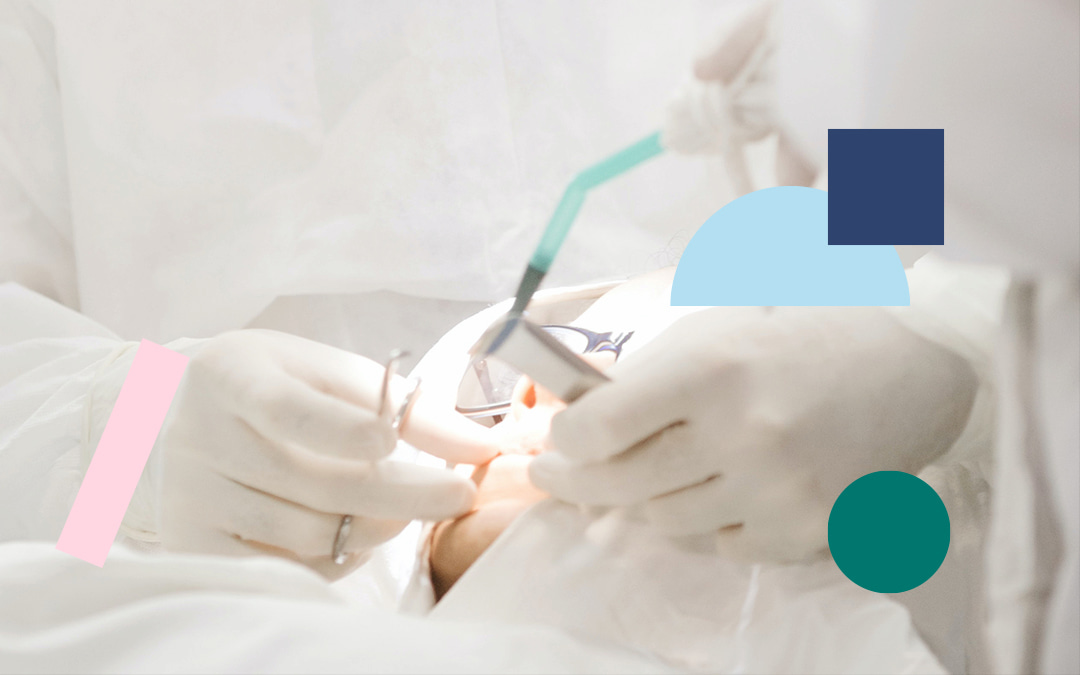Authors: Dr. Vinicius Rabelo and Dr. Eduardo Fregnani
In view of so many innovations in the medical and dental field, patients with longer life expectancy and patients with chronic and polymedicated diseases, knowing more is a necessity. Moreover, we are in the era of evidence-based dentistry/medicine, in which each specialist uses criteria for clinical decision-making through an individual process of integrating clinical experience, patient preferences and the guidelines produced by the best scientific evidence.
Assess and identify situations
The dentist must be prepared to assess and identify situations that require modifications to conventional procedures. A complete and thorough anamnesis, seeking to know who your patient is, what physical, mental, social and cultural context they are entering and identifying their complaints and concerns are essential. The questionnaire should cover all common medical conditions, but the interview is essential to explore possible false positives, false negatives and other potentially relevant information. Failure to recognise a risk factor for dental treatment and to modify it according to observed needs is an important indicator of loss of confidence or possible treatment failure.
Around 25% of patients seeking dental treatment have at least one potentially relevant systemic factor. Given advances in medicine, there is a noticeable increase in the survival of patients with chronic non-communicable diseases (NCDs), such as heart disease, cancer, stroke, prosthetic replacements, among others.
Thus, dentistry must seek multidisciplinarity between different professions and interact with doctors, physiotherapists, speech therapists, psychologists, nurses, among others who care for these patients.
Origins for post-treatment oral complicationstsurgical
There are different origins for post-treatment oral complications.tsurgical complications. We can mention those of haematological origin, underlying diseases (diabetes, systemic arterial hypertension, rare syndromes, osteoporosis), illicit drug use, infections, haemorrhagic events and also different aspects of cancer treatment, which may include chemotherapy, radiotherapy and use of antiresorptive drugs.
Thus, dentists should look for the following points to avoid the most frequent post-surgical complications in their clinical routine:
- Prevent: infections, haemorrhages, osteonecrosis, osteoradionecrosis.
- Control: pain, changes in the healing process, bleeding episodes.
- Maintain: oral functions of chewing, swallowing and phonetics.
- Manage: potential oral and systemic complications in patients with health disorders.
Prevention of post-surgical infections
For the prevention of post-surgical infections, the use of antibiotic prophylaxis, when precisely indicated, should respect the technical requirements recommended by guidelines published in the literature with the highest scientific rigour. In general, the prophylactic use of antibiotics in dentistry follows principles related to the immunological status of the individuals to be treated, the presence of systemic signs indicating the spread of infection and those related to the prevention of infective endocarditis. It is always prudent to remember that the prophylactic use of antibiotics remains a controversial issue in dentistry, and should be evaluated on a case-by-case basis, taking into account the risk and benefit of its indication.
Accompanying measures
Other adjuvant measures can be implemented, such as the indication of the use of mouthwashes based on 0.12% chlorhexidine digluconate(KIN Gingival Complex) even in the immediate pre-surgical period (5-7 days), when the intention is to reduce the microbial load present in the oral cavity, with the aim of reducing the inflammatory process already installed prior to the proposed surgical intervention (e.g. extractions, implant installation, periodontal surgery, etc.). This process can be enhanced when chlorhexidine digluconate-based toothpastes are added to patients' oral hygiene measures during specific treatment periods (e.g., during periodontal treatment). In these cases, the use of KIN Forte Gingival, with 0.05% chlorhexidine digluconate may be a practical option to provide or recommend to patients, under the guidance of a dentist. Exclusive products for the needs of oral health professionals.
Discover our products for professionals

The indication for the use of post-surgical rinses is also among the class of recommendations that present a good level of scientific evidence for the prevention of post-surgical infectious complications in dentistry. After respecting an initial period of 48 hours for the formation and effective maintenance of the blood clot in the operated site, mouth rinses with antimicrobial effect can be introduced. Their use is intended to reduce biofilm formation in the surgical wound and stitches. In these cases, the dentist may indicate KIN Gingival Complex, (panthenol, allantoin, CPC and 0.12% chlorhexidine digluconate) and/or the combined use of chlorhexidine gel and hyaluronic acid at extraction or gingivoplasty sites (e.g. PerioKIN Hyaluronic).
In the prevention and management of oral haemorrhagic events, risk factors identified in the anamnesis are indeed essential. These include the correct request and evaluation of complementary examinations, when accurately indicated by the anamnesis. However, even after careful clinical evaluation of the patient and his or her complementary examinations, haemorrhagic events may occur due to the presence of local aetiological factors (e.g. anatomical variations, larger vessels, increased local fibrinolysis due to infections and treated non-inflammatory processes). In these cases, it is essential to combine technical expertise with the availability of pre-selected local haemostatic methods.
Local haemostatic methods
Among the most cited and researched local haemostatic methods in the scientific literature, tranexamic acid stands out. In its current formulation(Kin Exogel), it allows greater substantivity and local action without apparent systemic absorption, as its vehicle is in the form of an oral bioadhesive gel. Its use can be of great help in alveolar and gingival procedures, or after biopsies, especially when combined with massive suturing. It acts by inhibiting the process of local fibrinolysis and saliva on the newly formed surgical clot. In this way, tranexamic acid allows the clot to stabilise before it is rapidly dissolved by the proteases of the fibrinolytic system present in human saliva.
It is important to note that, to achieve excellent haemostasis, we must always use the least traumatic surgical technique possible, with adequate repositioning of the flaps and coaptation of the edges, as well as adequate suturing.
The surgeon plays a key role in local control and care to avoid post-surgical complications, interpreting systemic problems and planning his procedures with effective local measures, combined with clear and efficient guidance to patients.




 What to consider when choosing the best electric toothbrush?
What to consider when choosing the best electric toothbrush? How to relieve pain with newly placed braces?
How to relieve pain with newly placed braces? How to keep your breath fresh?
How to keep your breath fresh?

